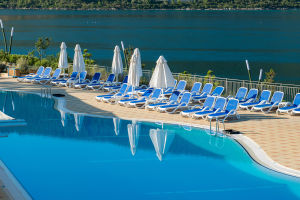Snow can be both boon and bane for outdoor travelers. When nice and firm, it can be a pleasure to scuff along, above all the terra firma messiness of brush, gravel, or deadfall. When soft and powdery, it invites long cross-country ski or snowshoe outings.
But then there’s the flipside: the half-melted slush absolutely exhausting to traverse for long distances, the rock-hard, ice-glazed slopes, the deep, brittle-crusted drifts you maddeningly posthole your way through. Not to mention, of course, all the outright hazards of the snowscape: crevasses, cornices, avalanches, weakly frozen-over bodies of water, etc.
If you are traveling by trail, keep in mind that it may be difficult to follow under a snowpack if no one has hiked or snowshoed across the trail recently. Obviously, this is more of a concern for a lesser-used National Forest route, for example, than a well-marked trail such as state park or county recreation area. Maintaining orientation skills like map reading and compass navigation skills (plus a GPS) are mandatory.
Atmospheric conditions affect how snow crystals form and once on the ground the snowpack changes over time, sometimes very dramatically. The myriad of snow and snowpacks often raise a challenge to hikers traversing trails and routes. Here are some general approaches for safely and comfortably traversing the variable and evolving snowscape:
On sunny and warm days, try to do most of your long-distance snow travel in the morning, when the night’s frozen crust is still intact. By afternoon, the snowpack may be slushing up, turning into a gloppy mess miserable to slog through and ramping up avalanche risk to boot.
If you do find yourself punching or skittering through slushy snow, seek a more shaded route where the snowpack is likely firmer to improve your hike.
Beware of the snow holes or moats often edging rocks, stumps, and trees.
In timbered country, don’t be blasé about fallen logs. Under a deep, firm snowpack, most may not be an issue. But when they’re partly snow-covered, it’s easy to twist an ankle in the cavities along them or on a buried branch or root nub. And be careful of your footing if you’re stepping across such logs, as slightly snow-mounded ones can be slippery indeed.
In hilly or mountainous terrain, ridges often offer the safest, easiest throughways. But be extremely careful of cornices, for those rims of free-hanging snow off the leeward edges of ridge lines are prone to collapse. Give them a wide berth, and keep a sharp eye out for cracks that may reveal the fracture line; you want to stay on the non-cornice side of this breakaway zone, however, beware it’s often invisible. Bare rock is safe, but don’t assume solid ground connects successive outcrops: They may be jutting out from the main ridge spine and be separated by hazardous, corniced snow alone.
It is also very important to keep warm when traveling in snowy mountains.
No matter where you go for the snow, be it North America, New Zealand, Japan or Europe, there will be days where the weather is good, however, it can be hard to predict when it will turn bad. A change in conditions, including fog, high winds and heavy snowfall, can happen rapidly and visibility can drop to almost nil, putting you in a potentially dangerous situation.


